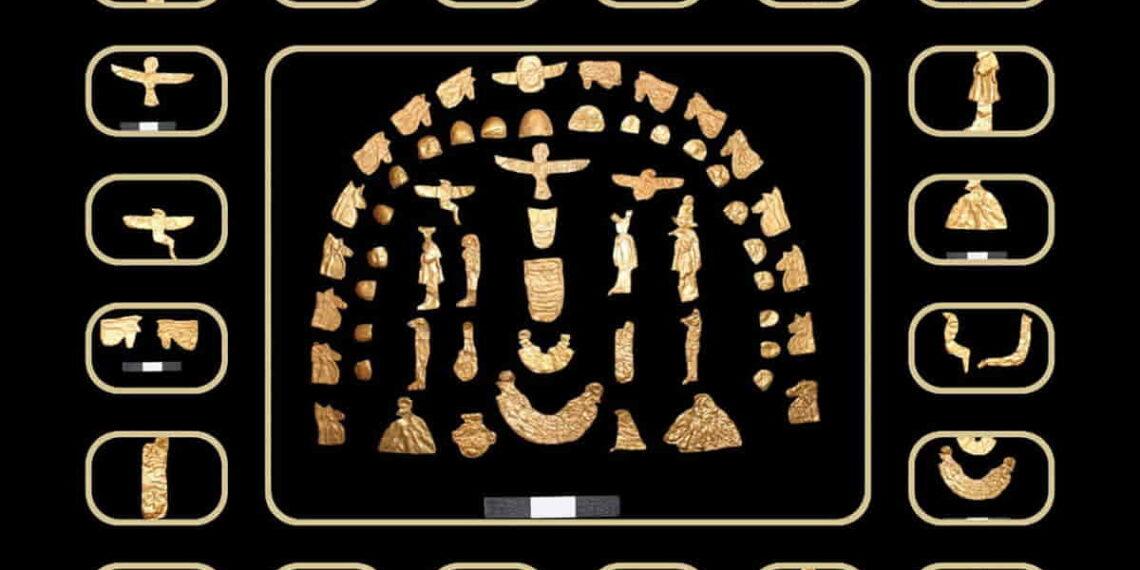Archaeologists Unearth Treasure Trove of Ancient Artifacts from Egypt’s Last Dynasty
A remarkable discovery of ancient artifacts from Egypt’s final dynasty has been made in the Nile Delta, uncovering a wealth of items, including gold jewelry and artifacts from Egypt’s Late and Ptolemaic periods. The find, located in 63 tombs, is being carefully restored and cataloged by experts.
The news was confirmed by an official with Egypt’s Ministry of Tourism and Antiquities on Monday. Among the treasures uncovered are gold pieces and exquisite jewelry, with some items potentially destined for display at one of Egypt’s prestigious museums, according to Neveine el-Arif, spokeswoman for the Ministry.
The discovery was made by an Egyptian archaeological mission led by the Supreme Council of Antiquities at the Tell al-Deir necropolis, situated in the city of Damietta, within the Damietta governorate. The tombs were constructed from mud brick and are believed to date back to the late stages of Egypt’s Ptolemaic rule.
In addition to gold and jewelry, other significant finds include statues, funerary amulets, and a pottery vessel containing 38 bronze coins from the Ptolemaic period. These coins offer a rare glimpse into the era and add to the growing understanding of this ancient civilization.
The Ptolemaic dynasty, which ruled Egypt from 305 B.C. to 30 B.C., marked the last period of independent Egyptian rule before the country became part of the Roman Empire. Founded by Ptolemy I, one of Alexander the Great’s generals, the dynasty came to a dramatic end with Cleopatra VII.
In 2018, the Egyptian Museum in Cairo showcased a significant collection of Ptolemaic artifacts, with around 300 items on display for the first time, offering visitors a deeper look into this fascinating era of Egyptian history.
This discovery is another valuable addition to Egypt’s rich archaeological heritage, shedding new light on the grandeur and mystery of the Ptolemaic dynasty.
This article was rewritten by JournosNews.com based on verified reporting from trusted sources. The content has been independently reviewed, fact-checked, and edited for accuracy, neutrality, tone, and global readability in accordance with Google News and AdSense standards.
All opinions, quotes, or statements from contributors, experts, or sourced organizations do not necessarily reflect the views of JournosNews.com. JournosNews.com maintains full editorial independence from any external funders, sponsors, or organizations.
Stay informed with JournosNews.com — your trusted source for verified global reporting and in-depth analysis. Follow us on Google News, BlueSky, and X for real-time updates.














